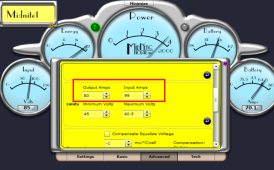And this is where I continually learn. Voltage is critical to an electric circuit, the amps is load driven, thus a device can only pull as many amps as it's load is designed. A short to ground (fault) is a design meant to handle ALL amps it could be fed, and is very good at consuming it.
The inverter is a special beast, that I recognize. Its goal is to reach its max output power (Volts/Amps) in watts. It juggles volts and amps to reach that point.
The bigger question is something we all acknowledge but don't like to admit that there are inverters in the market that don't do what they should. They are not to what we constitute quality design even from well known manufacturers. That's the rub, that's the hesitation.
There are some inverters that say 360v@15amps=5100watts output. However, won't they don't tell you is if you place a load on the inverter of 10,000 watts, the inverter will either try to grab more volts or amps well above the input limit to try to meet the load and go poof. These are fixed inverters, no smarts, no limits. So if you provide 100amps to the input, the inverter will grab all 100amps,*volts and try to output the watts *IF* there is a load demanding it.
My batteries come in next week, the rest of my circuit arrives this weekend. I reached out to Huawei but given the current political landscape, I doubt I'll get a reply. I'll have a quick disconnect in my circuit, a 20amp fuse inline to the inverter along with measuring devices at each critical part of my circuit. I'll hook it up, throw the lever, and see how things go boom.




